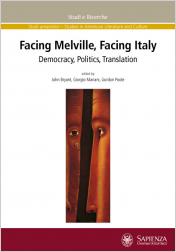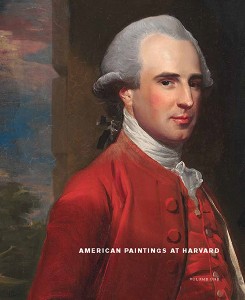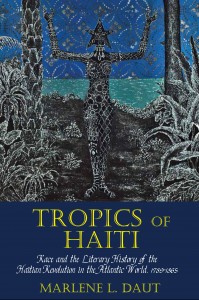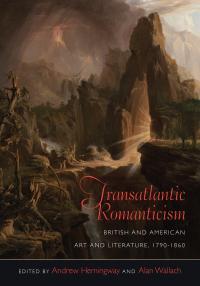 From Sapienza Univerista Editrice: When Herman Melville did his seven-month tour of Greece, the Near-East, and Western Europe in 1856-1857, Italy, although still a ‘geographical expression,’ was resurging politically in its centuries-old yearning for unity and freedom. Perhaps there was no global traveler more cosmopolitan than Melville or more artistically sensitive to the peninsula’s political unrest and aspirations.He perceived the scenes, sounds, gestures, peoples, usages, and languages of Italy, Palestine, and the other countries he visited with a sensitivity honed by his early experience of proletarian shipboard multi-ethnicity and his immersion in the cultural diversities of the South Seas islands. His cosmopolitanism was seized upon by Cesare Pavese, who translated Moby-Dick and “Benito Cereno” into Italian, as what he may have seen as a fresh alternative to the stultifying nationalism of Fascism. The essays in the present volume are a selection from the Melville Society’s 8th International Conference, held in Rome in June 2011. Cosmopolitan in their authorship and themes, they offer new insights and background for better understanding Melville’s importance as a herald of global concerns that are very much with us still today.
From Sapienza Univerista Editrice: When Herman Melville did his seven-month tour of Greece, the Near-East, and Western Europe in 1856-1857, Italy, although still a ‘geographical expression,’ was resurging politically in its centuries-old yearning for unity and freedom. Perhaps there was no global traveler more cosmopolitan than Melville or more artistically sensitive to the peninsula’s political unrest and aspirations.He perceived the scenes, sounds, gestures, peoples, usages, and languages of Italy, Palestine, and the other countries he visited with a sensitivity honed by his early experience of proletarian shipboard multi-ethnicity and his immersion in the cultural diversities of the South Seas islands. His cosmopolitanism was seized upon by Cesare Pavese, who translated Moby-Dick and “Benito Cereno” into Italian, as what he may have seen as a fresh alternative to the stultifying nationalism of Fascism. The essays in the present volume are a selection from the Melville Society’s 8th International Conference, held in Rome in June 2011. Cosmopolitan in their authorship and themes, they offer new insights and background for better understanding Melville’s importance as a herald of global concerns that are very much with us still today.
New Book: Transatlantic Literary Studies, 1660–1830 by Eve Tavor Bannet and Susan Manning, Eds.
 From Cambridge University Press: The recently developed field of transatlantic literary studies has encouraged scholars to move beyond national literatures towards an examination of communications between Britain and the Americas. The true extent and importance of these material and literary exchanges is only just beginning to be discovered. This collection of original essays explores the transatlantic literary imagination during the key period from 1660 to 1830: from the colonization of the Americas to the formative decades following political separation between the nations. Contributions from leading scholars from both sides of the Atlantic bring a variety of approaches and methods to bear on both familiar and undiscovered texts. Revealing how literary genres were borrowed and readapted to a different context, the volume offers an index of the larger literary influences going backwards and forwards across the ocean.
From Cambridge University Press: The recently developed field of transatlantic literary studies has encouraged scholars to move beyond national literatures towards an examination of communications between Britain and the Americas. The true extent and importance of these material and literary exchanges is only just beginning to be discovered. This collection of original essays explores the transatlantic literary imagination during the key period from 1660 to 1830: from the colonization of the Americas to the formative decades following political separation between the nations. Contributions from leading scholars from both sides of the Atlantic bring a variety of approaches and methods to bear on both familiar and undiscovered texts. Revealing how literary genres were borrowed and readapted to a different context, the volume offers an index of the larger literary influences going backwards and forwards across the ocean.
New Book: Transnationalism and American Literature Literary Translation 1773–1892 By Colleen G. Boggs
 From Routledge: This book examines nineteenth century contexts of transnationalism, translation and American literature. The discussion of transnationalism largely revolves around the question of what role nationalism plays in the spaces and temporalities of the transatlantic. Boggs demonstrates that the assumption that American literature has become transnational only recently – that there is such a thing as an “era” of transnationalism – marks a blindness to the intrinsic transatlanticism of American literature.
From Routledge: This book examines nineteenth century contexts of transnationalism, translation and American literature. The discussion of transnationalism largely revolves around the question of what role nationalism plays in the spaces and temporalities of the transatlantic. Boggs demonstrates that the assumption that American literature has become transnational only recently – that there is such a thing as an “era” of transnationalism – marks a blindness to the intrinsic transatlanticism of American literature.
New Book: Love, Liberation, and Escaping Slavery: William and Ellen Craft in Cultural Memory by Barbara McCaskill
 From the University of Georgia Press: Love, Liberation, and Escaping Slavery: William and Ellen Craft in Cultural Memory, is Barbara McCaskill’s study of pivotal moments in the dynamic lives of William and Ellen Craft, two African Americans who successfully fled from American bondage. Passing as a white southern planter and gentleman, Ellen Craft left Georgia in 1848, with her husband William completing the performance as his “master’s” obedient servant. McCaskill examines transatlantic periodicals and print productions to discuss how the Crafts publicly represented themselves, the advantages and limitations of alliances they forged with British and American reformers, and what their story tells us about how we remember slavery. Her reading of their narrative, Running a Thousand Miles for Freedom, highlights themes of community, partnership, and visibility that characterized their transatlantic activism, and where their endeavors sometimes fell short. Her study concludes with evaluation of the couple’s extraordinary decision to return to Georgia and educate the freedpeople.
From the University of Georgia Press: Love, Liberation, and Escaping Slavery: William and Ellen Craft in Cultural Memory, is Barbara McCaskill’s study of pivotal moments in the dynamic lives of William and Ellen Craft, two African Americans who successfully fled from American bondage. Passing as a white southern planter and gentleman, Ellen Craft left Georgia in 1848, with her husband William completing the performance as his “master’s” obedient servant. McCaskill examines transatlantic periodicals and print productions to discuss how the Crafts publicly represented themselves, the advantages and limitations of alliances they forged with British and American reformers, and what their story tells us about how we remember slavery. Her reading of their narrative, Running a Thousand Miles for Freedom, highlights themes of community, partnership, and visibility that characterized their transatlantic activism, and where their endeavors sometimes fell short. Her study concludes with evaluation of the couple’s extraordinary decision to return to Georgia and educate the freedpeople.
New Article: “Finding Otira: On the Geopolitics of Black Celebrity” by James W. Cook
From the fall 2014 of Raritan, a peer-reviewed arts and ideas journal that aims “to reach the common reader in everyone and to provide a particular experience of reading, one that nurtures an engaged and questioning approach to cultural texts of all sorts: literary, artistic, political, historical, sociological, even scientific” Access the current issue here. Access a PDF of Dr. Cook’s article here.
New Book: American Paintings at Harvard Volume 1: Paintings, Watercolors, and Pastels by Artists Born Before 1826 by Theodore E. Stebbins Jr. and Melissa Renn, Eds.
 From Yale University Press: This volume features nearly 500 paintings, watercolors, pastels, and miniatures from Harvard University’s storied, yet little-known, collection of American art. These works, many unpublished, are drawn from the Harvard Art Museums, the University Portrait Collection, the Peabody Museum of Archaeology and Ethnology, and other entities, and date from the early colonial years to the mid-19th century. Highlights include a rare group of 17th-century portraits, along with important paintings by Robert Feke, John Singleton Copley, Charles Willson Peale, Gilbert Stuart, and Washington Allston, in addition to works depicting western and Native American subjects by Alexandre de Batz, Henry Inman, and Alfred Jacob Miller, among others. Each work is accompanied by scholarly commentary that draws on extensive new research, as well as a complete exhibition and reference history. An introduction by Theodore E. Stebbins Jr. describes the history of the collection. Lavishly illustrated in color, this compendium is a testament to the nation’s oldest collection of American art, and an essential resource for scholars and collectors alike.
From Yale University Press: This volume features nearly 500 paintings, watercolors, pastels, and miniatures from Harvard University’s storied, yet little-known, collection of American art. These works, many unpublished, are drawn from the Harvard Art Museums, the University Portrait Collection, the Peabody Museum of Archaeology and Ethnology, and other entities, and date from the early colonial years to the mid-19th century. Highlights include a rare group of 17th-century portraits, along with important paintings by Robert Feke, John Singleton Copley, Charles Willson Peale, Gilbert Stuart, and Washington Allston, in addition to works depicting western and Native American subjects by Alexandre de Batz, Henry Inman, and Alfred Jacob Miller, among others. Each work is accompanied by scholarly commentary that draws on extensive new research, as well as a complete exhibition and reference history. An introduction by Theodore E. Stebbins Jr. describes the history of the collection. Lavishly illustrated in color, this compendium is a testament to the nation’s oldest collection of American art, and an essential resource for scholars and collectors alike.
New Book: America’s England: Antebellum Literature and Atlantic Sectionalism by Christopher Hanlon
 From Oxford University Press: America’s England examines the patterns of affiliation through which antebellum northerners and southerners in the United States codified their antipathies in terms of various constructions of England. Hanlon argues that widely circulated fantasies of English racial origins, sweeping English geographies and picturesque spaces, transatlantic telecommunication, and Free Trade economics rallied writers and public intellectuals such as Ralph Waldo Emerson, Frederick Douglass, Lydia Child, Henry Timrod, William Gilmore Simms, George Fitzhugh, Nathaniel Hawthorne, Charles Sumner, Henry Herbert, and many others as they situated the cisatlantic crisis at oceanic removes.
From Oxford University Press: America’s England examines the patterns of affiliation through which antebellum northerners and southerners in the United States codified their antipathies in terms of various constructions of England. Hanlon argues that widely circulated fantasies of English racial origins, sweeping English geographies and picturesque spaces, transatlantic telecommunication, and Free Trade economics rallied writers and public intellectuals such as Ralph Waldo Emerson, Frederick Douglass, Lydia Child, Henry Timrod, William Gilmore Simms, George Fitzhugh, Nathaniel Hawthorne, Charles Sumner, Henry Herbert, and many others as they situated the cisatlantic crisis at oceanic removes.
New Book: Common Things: Romance and the Aesthetics of Belonging in Atlantic Modernity by James D. Lilley
 From Fordham University Press: What are the relationships between the books we read and the communities we share? Common Things explores how transatlantic romance revivals of the eighteenth and nineteenth century influenced—and were influenced by—emerging modern systems of community.Drawing on the work of Washington Irving, Henry Mackenzie, Thomas Jefferson, James Fenimore Cooper, Robert Montgomery Bird, and Charles Brockden Brown, the book shows how romance promotes a distinctive aesthetics of belonging—a mode of being in common tied to new qualities of the singular. Each chapter focuses on one of these common things—the stain of race, the “property” of personhood, ruined feelings, the genre of a text, and the event of history—and examines how these peculiar qualities work to sustain the coherence of our modern common places. In the work of Horace Walpole and Edgar Allan Poe, the book further uncovers an important— and never more timely—alternative aesthetic practice that reimagines community as an open and fugitive process rather than as a collection of common things.
From Fordham University Press: What are the relationships between the books we read and the communities we share? Common Things explores how transatlantic romance revivals of the eighteenth and nineteenth century influenced—and were influenced by—emerging modern systems of community.Drawing on the work of Washington Irving, Henry Mackenzie, Thomas Jefferson, James Fenimore Cooper, Robert Montgomery Bird, and Charles Brockden Brown, the book shows how romance promotes a distinctive aesthetics of belonging—a mode of being in common tied to new qualities of the singular. Each chapter focuses on one of these common things—the stain of race, the “property” of personhood, ruined feelings, the genre of a text, and the event of history—and examines how these peculiar qualities work to sustain the coherence of our modern common places. In the work of Horace Walpole and Edgar Allan Poe, the book further uncovers an important— and never more timely—alternative aesthetic practice that reimagines community as an open and fugitive process rather than as a collection of common things.
New Book: Tropics of Haiti Race and the Literary History of the Haitian Revolution in the Atlantic World, 1789-1865 by Marlene L. Daut
From Liverpool University Press:  The Haitian Revolution (1791–1804) was an event of monumental world-historical significance, and here, in the first systematic literary history of those events, Haiti’s war of independence is examined through the eyes of its actual and imagined participants, observers, survivors, and cultural descendants. The ‘transatlantic print culture’ under discussion in this literary history reveals that enlightenment racial ‘science’ was the primary vehicle through which the Haitian Revolution was interpreted by nineteenth-century Haitians, Europeans, and U.S. Americans alike. Through its author’s contention that the Haitian revolutionary wars were incessantly racialized by four constantly recurring tropes—the ‘monstrous hybrid’, the ‘tropical temptress’, the ‘tragic mulatto/a’, and the ‘colored historian’—Tropics of Haiti shows the ways in which the nineteenth-century tendency to understand Haiti’s revolution in primarily racial terms has affected present day demonizations of Haiti and Haitians. In the end, this new archive of Haitian revolutionary writing, much of which has until now remained unknown to the contemporary reading public, invites us to examine how nineteenth-century attempts to paint Haitian independence as the result of a racial revolution coincide with present-day desires to render insignificant and ‘unthinkable’ the second independent republic of the New World.
The Haitian Revolution (1791–1804) was an event of monumental world-historical significance, and here, in the first systematic literary history of those events, Haiti’s war of independence is examined through the eyes of its actual and imagined participants, observers, survivors, and cultural descendants. The ‘transatlantic print culture’ under discussion in this literary history reveals that enlightenment racial ‘science’ was the primary vehicle through which the Haitian Revolution was interpreted by nineteenth-century Haitians, Europeans, and U.S. Americans alike. Through its author’s contention that the Haitian revolutionary wars were incessantly racialized by four constantly recurring tropes—the ‘monstrous hybrid’, the ‘tropical temptress’, the ‘tragic mulatto/a’, and the ‘colored historian’—Tropics of Haiti shows the ways in which the nineteenth-century tendency to understand Haiti’s revolution in primarily racial terms has affected present day demonizations of Haiti and Haitians. In the end, this new archive of Haitian revolutionary writing, much of which has until now remained unknown to the contemporary reading public, invites us to examine how nineteenth-century attempts to paint Haitian independence as the result of a racial revolution coincide with present-day desires to render insignificant and ‘unthinkable’ the second independent republic of the New World.
New Book: Transatlantic Romanticism by Andrew Hemingway and Alan Wallach, Eds.
From the University of Massachusetts Press: That the Romantic movement was an international phenomenon is a commonplace, yet to date, historical study of the movement has tended to focus primarily on its national manifestations. This volume offers a new perspective. In thirteen chapters devoted to artists and writers of the late eighteenth and early nineteenth centuries, leading scholars of the period examine the international exchanges that were crucial for the rise of Romanticism in England and the United States.
That the Romantic movement was an international phenomenon is a commonplace, yet to date, historical study of the movement has tended to focus primarily on its national manifestations. This volume offers a new perspective. In thirteen chapters devoted to artists and writers of the late eighteenth and early nineteenth centuries, leading scholars of the period examine the international exchanges that were crucial for the rise of Romanticism in England and the United States.
In the book’s introduction, Andrew Hemingway—building on the theoretical work of Michael Lowy and Robert Sayre—proposes that we need to remobilize the concept of Weltanschauung, or comprehensive worldview, in order to develop the kind of synthetic history of arts and ideas the phenomenon of Romanticism demands. The essays that follow focus on the London and New York art worlds and such key figures as Benjamin West, Thomas Bewick, John Vanderlyn, Washington Allston, John Martin, J. M. W. Turner, Thomas Cole, James Fenimore Cooper, George Catlin, Edgar Allan Poe, Harriet Beecher Stowe, and Herman Melville. Taken together, these essays plot the rise of a romantic anti-capitalist Weltanschauung as well as the dialectic between Romanticism’s national and international manifestations.
In addition to the volume editors, contributors include Matthew Beaumont, David Bindman, Leo Costello, Nicholas Grindle, Wayne Franklin, Janet Koenig, William Pressly, Robert Sayre, William Truettner, Dell Upton, and William Vaughan. – See more at: http://www.umass.edu/umpress/title/transatlantic-romanticism#sthash.ZBjrHmlo.dpuf